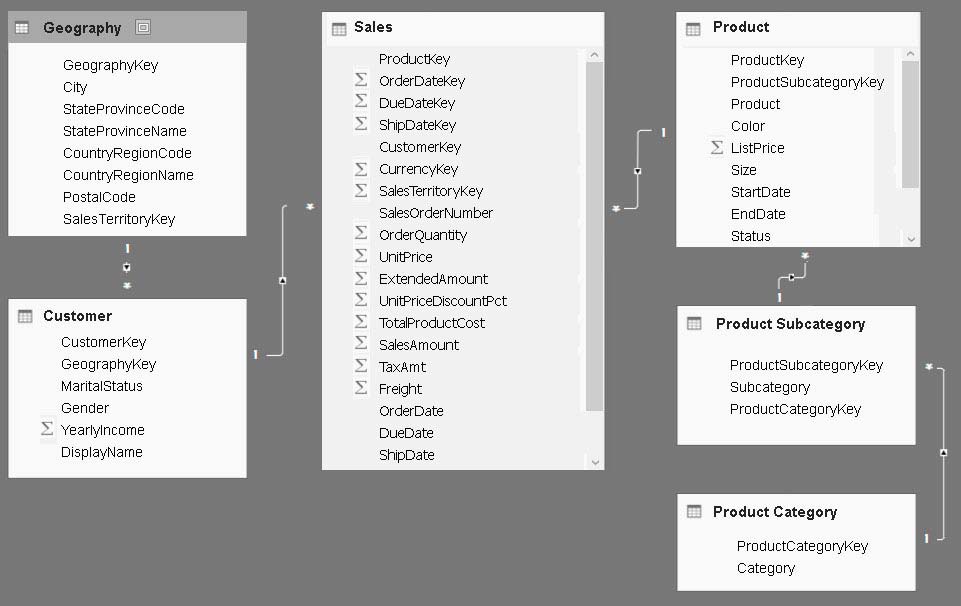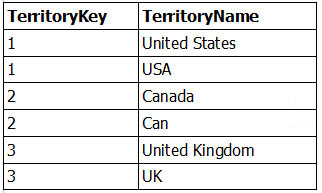

Note: This question is part of a series of questions that use the same scenario. For your convenience, the scenario is repeated in each question. Each question presents a different goal and answer choices, but the text of the scenario is exactly the same in each question in this series.
Start of repeated scenario.
You have a Microsoft SQL Server database that has the tables shown in the Database Diagram exhibit. (Click the Exhibit button.)
You plan to develop a Power BI model as shown in the Power BI Model exhibit. (Click the Exhibit button.)
You plan to use Power BI to import data from 2013 to 2015.
Product Subcategory[Subcategory] contains NULL values.
End of Repeated Scenario.
You implement the Power BI model.
You add another table named Territory to the model. A sample of the data is shown in the following table.
You need to create a relationship between the Territory table and the Sales table.
Which function should you use in the query for Territory before you create the relationship?
Jew0598
2 years, 2 months agoraphidol
3 years, 6 months agoCDL
4 years, 7 months agoBravo2061
4 years, 8 months agoemile
5 years, 7 months agoPabloM
5 years, 6 months agoPabloM
5 years, 6 months agoAnetaK
5 years, 10 months agoSteveKarr
5 years, 10 months ago